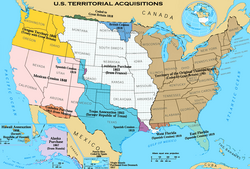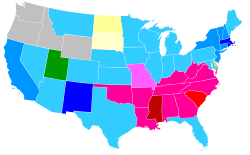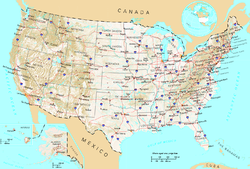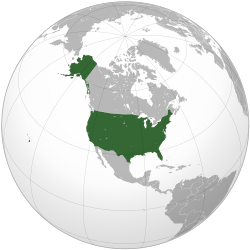Us population 2005 lrg
- earthobservatory.nasa.gov/Study/Location/ Location, Location, Location , on the Earth Observatory.
Relevantní obrázky










































Relevantní články
Spojené státy americkéSpojené státy americké, zkráceným názvem Spojené státy, zkratkou USA, jsou demokratická federativní prezidentská republika v Severní Americe, rozkládající se mezi Atlantským oceánem na východě a Tichým oceánem na západě. Na severu sousedí s Kanadou a na jihu s Mexikem. Díky státu Aljaška sahá území Spojených států amerických i k břehům Severního ledového oceánu, zahrnuje také některé tichomořské ostrovy. Spojené státy se skládají z 50 států, jednoho federálního území s hlavním městem a sídlem prezidenta, Kongresu a Nejvyššího soudu, šesti závislých území a deseti malých ostrovů či útesů. .. pokračovat ve čtení
